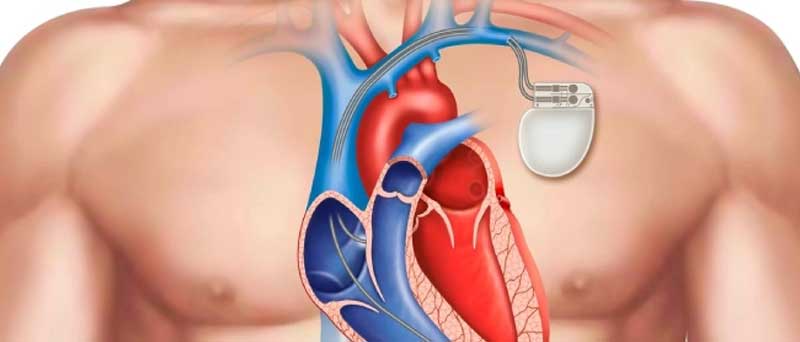
Pacemaker Implantation
A pacemaker is a device that sends small electrical impulses to the heart muscle to maintain a suitable heart rate or to stimulate the lower chambers of the heart (ventricles). A pacemaker may also be used to prevent patients from having fainting spells (syncope), and to help patients with congestive heart failure and hypertrophic cardiomyopathy.
The atria (upper chambers of the heart) and ventricles (lower chambers of the heart) work together, taking turns contracting and relaxing to pump blood through the heart. The electrical system of the heart controls this process.
The electrical impulse normally begins at the sinoatrial (SA) node, located in the right atrium. The electrical activity spreads through the walls of the atria, causing them to contract.
Next, the electrical impulse travels through the AV node, located between the atria and ventricles. The AV node acts like a gate that slows the electrical signal before it enters the ventricles. This delay gives the atria time to contract before the ventricles do.
From the AV node, the electrical impulse travels through the His-Purkinje network. This is a pathway of fibers that conduct electricity. From here, the impulse travels into the muscular walls of the ventricles, causing them to contract. This entire sequence makes up a complete heartbeat and repeats 60 to 100 times per minute.


